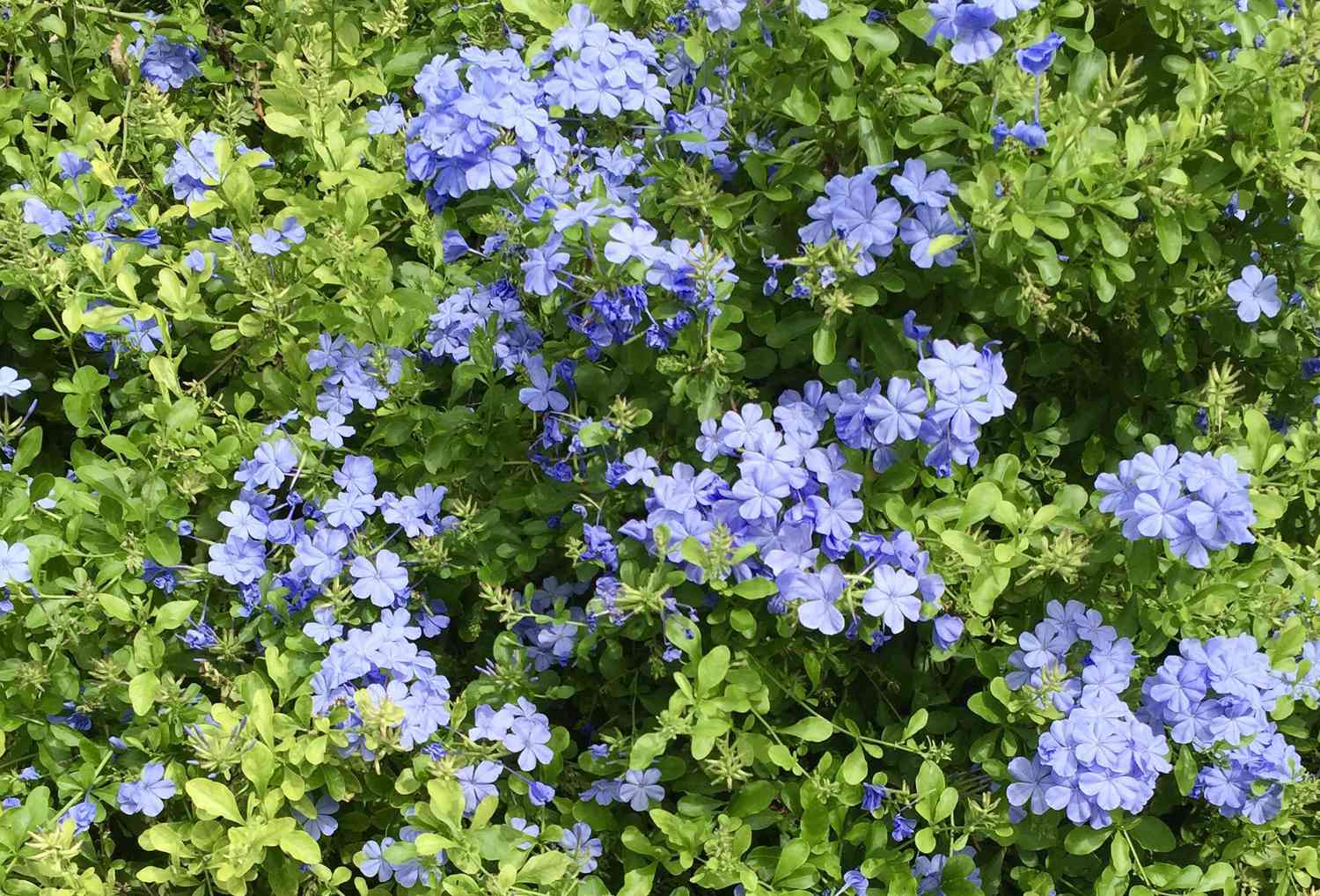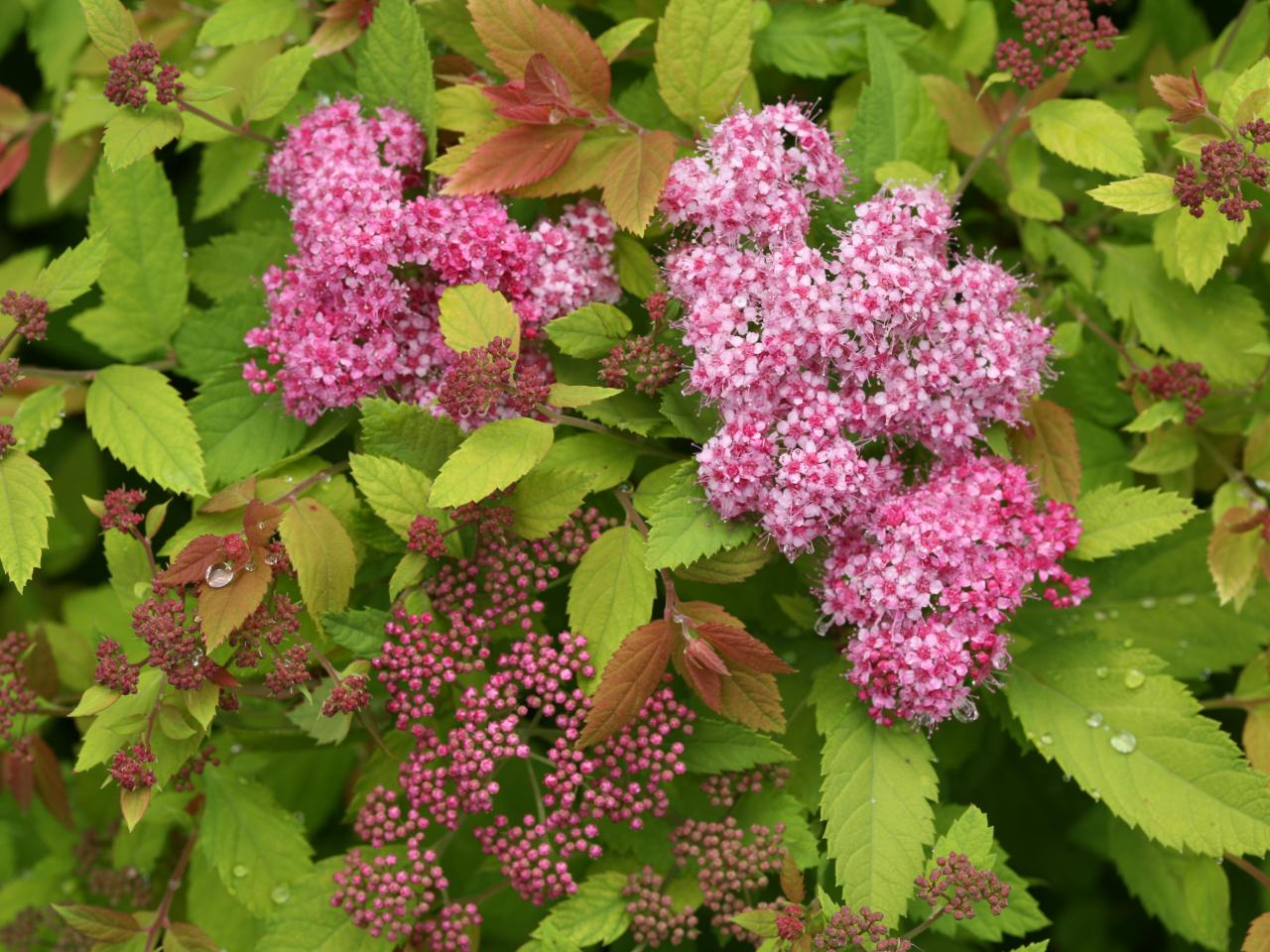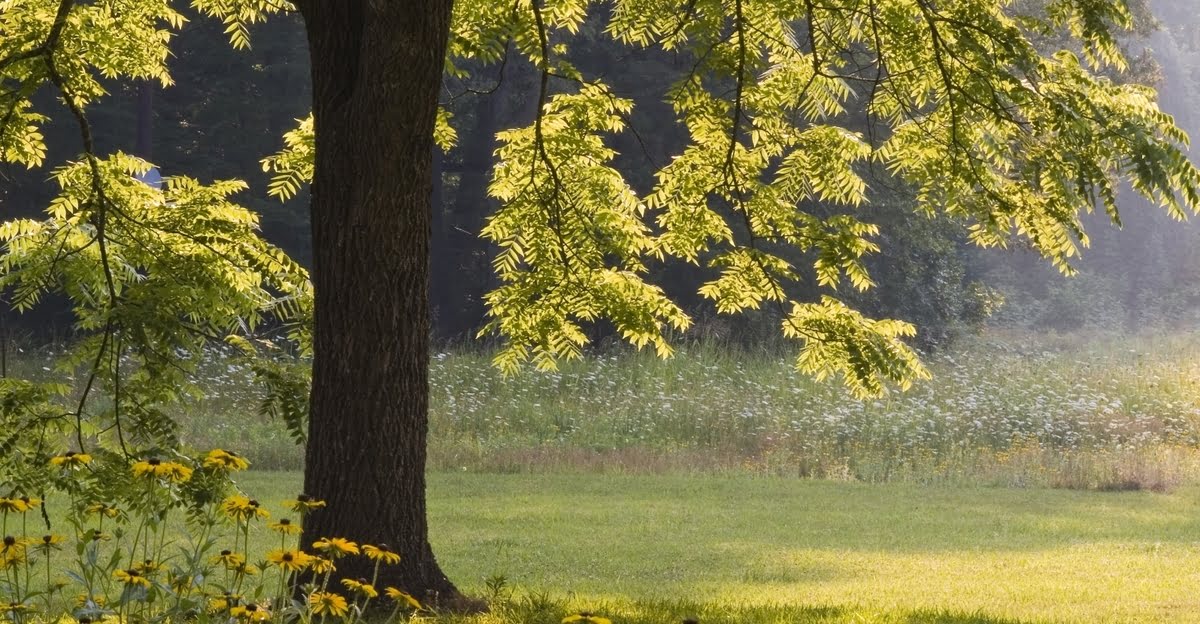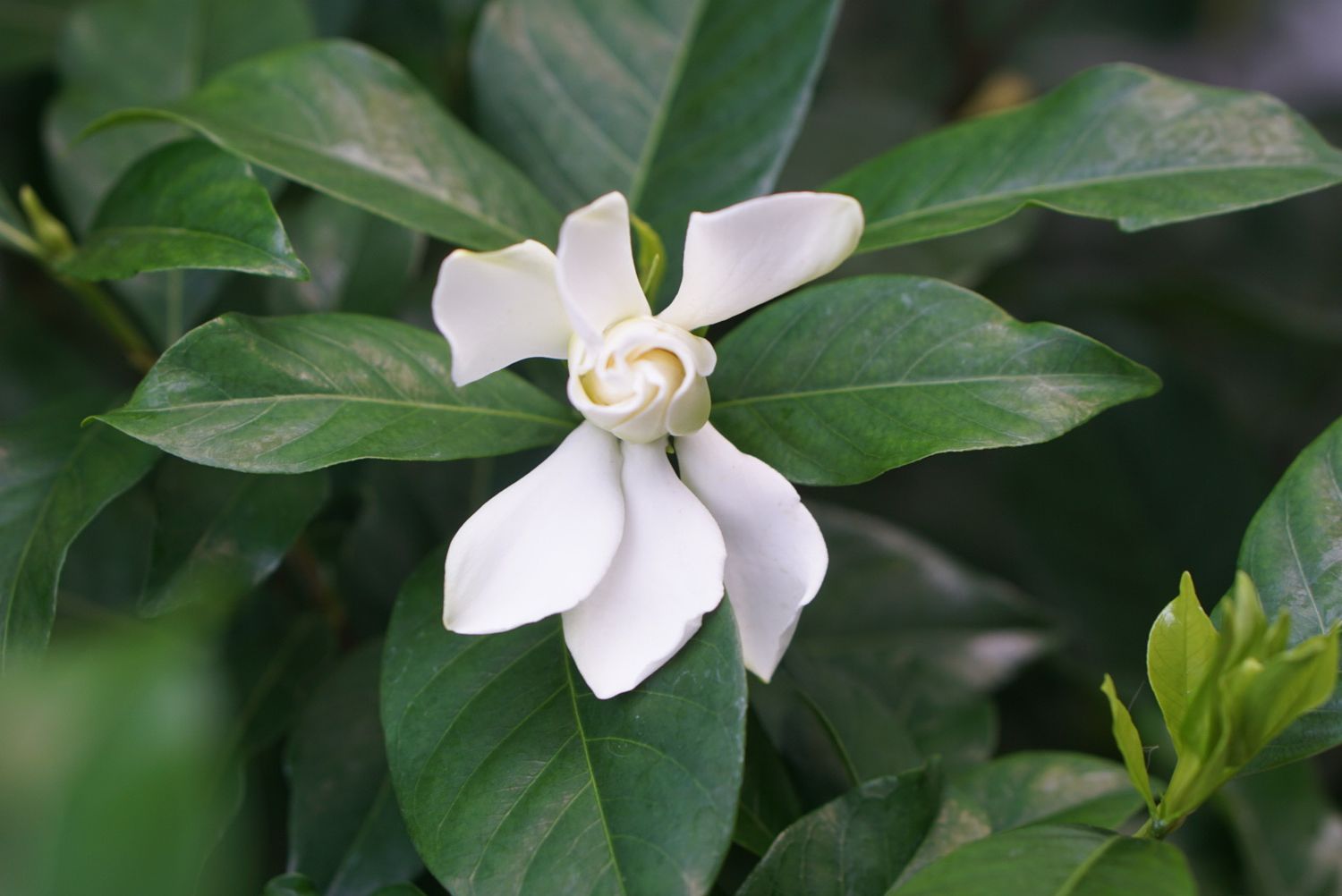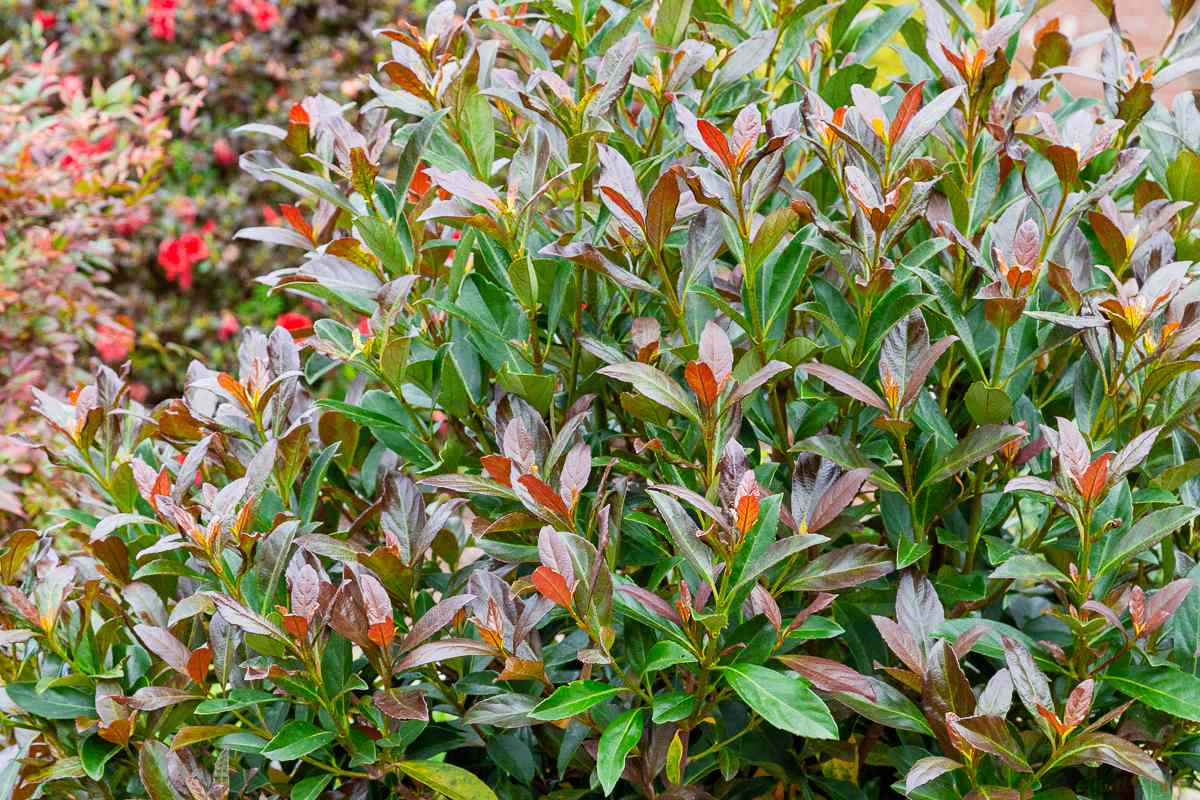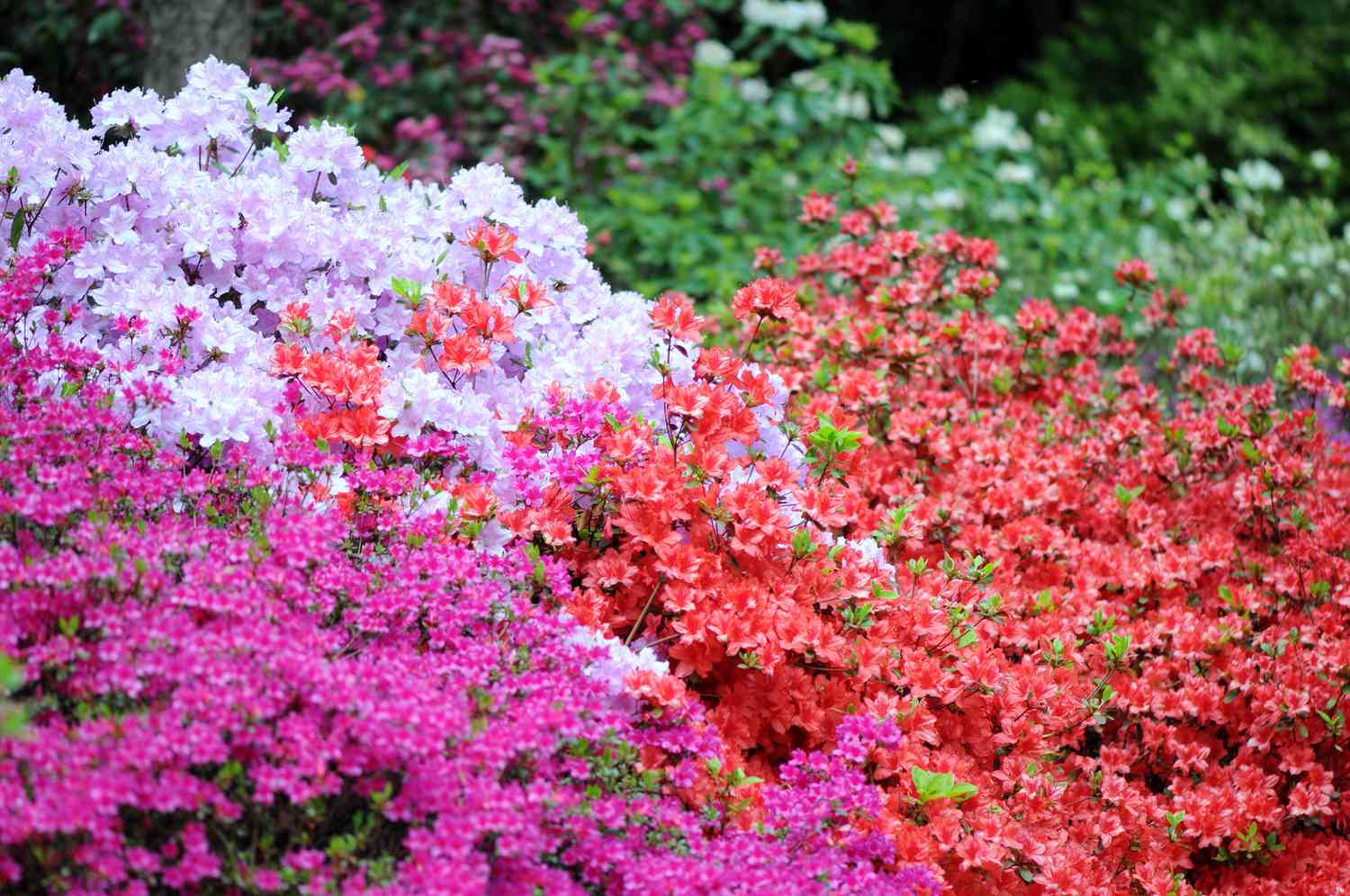Home>Gardening Techniques>Seasonal Gardening>What Flowers Or Flowering Shrubs Grow In The Shade In Fl
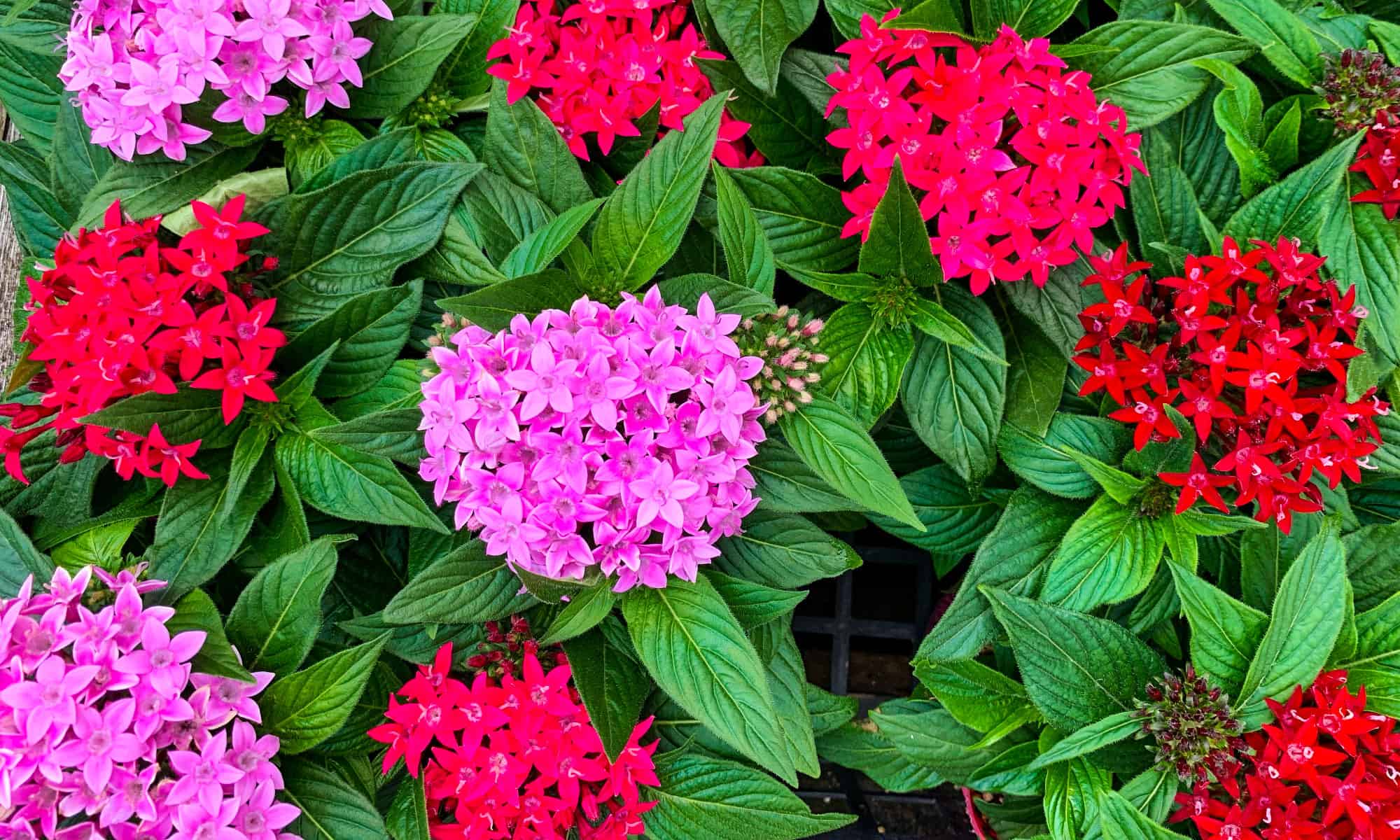

Seasonal Gardening
What Flowers Or Flowering Shrubs Grow In The Shade In Fl
Modified: February 8, 2024
Discover the best seasonal gardening tips for growing flowers and flowering shrubs in the shade in Florida. Enhance your landscape with beautiful plants that thrive in shady areas.
(Many of the links in this article redirect to a specific reviewed product. Your purchase of these products through affiliate links helps to generate commission for Chicagolandgardening.com, at no extra cost. Learn more)
Table of Contents
- Introduction
- Importance of Shade-Tolerant Flowers and Flowering Shrubs in Florida
- Factors to Consider When Choosing Shade-Tolerant Plants
- Common Flowers that Grow in Shade in Florida
- Impatiens (Impatiens spp.)
- Begonias (Begonia spp.)
- Hostas (Hosta spp.)
- Caladiums (Caladium spp.)
- Coleus (Coleus spp.)
- Common Flowering Shrubs that Grow in Shade in Florida
- Azaleas (Rhododendron spp.)
- Camellias (Camellia spp.)
- Hydrangeas (Hydrangea spp.)
- Gardenias (Gardenia spp.)
- Fuchsias (Fuchsia spp.)
- Conclusion
Introduction
When it comes to gardening, one of the key factors to consider is the amount of sunlight your plants will receive. While there are plenty of flowers and flowering shrubs that thrive in the bright Florida sun, finding options for shaded areas can be a bit more challenging. However, with the right selection of shade-tolerant plants, you can create a lush and colorful garden even in the shadiest spots of your yard.
Shade-tolerant flowers and flowering shrubs are especially important in Florida, where the hot and humid climate can cause direct sunlight to be too intense for some plants. These shade-loving options not only bring beauty and vibrancy to those areas of your garden that receive limited sunlight, but they also provide a much-needed respite for both the plants and the gardener.
When choosing shade-tolerant plants, it’s essential to consider a few factors. First, assess the amount of shade your garden receives throughout the day. Full shade refers to areas that receive less than two hours of direct sunlight, while partial shade refers to areas that receive two to six hours of sunlight. This will help you determine which plants are best suited for your specific conditions.
Another important factor to consider is the soil type and moisture levels in your shaded area. Some plants thrive in well-drained soil, while others prefer moist conditions. Take note of the soil pH as well, as certain shade-loving plants have specific pH requirements.
In this article, we will explore some common shade-tolerant flowers and flowering shrubs that can thrive in the shade throughout Florida. By incorporating these plants into your garden, you can create a beautiful and vibrant oasis even in the shadiest corners of your yard.
Importance of Shade-Tolerant Flowers and Flowering Shrubs in Florida
Shade-tolerant flowers and flowering shrubs play a vital role in enhancing the overall beauty and diversity of gardens in Florida. With the state’s hot and humid climate, finding plants that can thrive in shaded areas is essential for creating visually pleasing landscapes that offer relief from the intense sun.
One of the key benefits of shade-tolerant plants is their ability to transform dull, shaded spots into vibrant and colorful areas. By carefully selecting the right flowers and flowering shrubs, you can add pops of color and visual interest to areas that would otherwise be lacking in natural light. This allows for a more dynamic and captivating garden, ensuring that every corner of your outdoor space is full of life and beauty.
Shade-loving plants also provide a cooling effect in hot climates like Florida. By planting these varieties in shady areas of your garden, you can create a more comfortable and pleasant outdoor environment for both yourself and your plants. The shade provided by these plants helps to moderate soil temperatures, reducing the risk of heat stress and dehydration for the plants. It also provides a respite for gardeners, offering a shaded retreat where they can relax and enjoy the beauty of their garden.
In addition to their aesthetic appeal and cooling effects, shade-tolerant flowers and flowering shrubs contribute to the overall health of the ecosystem. They provide shelter and food sources for various insects, birds, and other small animals. This promotes biodiversity and helps create a balanced and sustainable environment within your garden.
Moreover, shade-loving plants can also help prevent soil erosion in shaded areas. Their root systems help hold the soil in place and prevent excessive runoff during heavy rainfall, which is especially important in areas prone to erosion.
By incorporating shade-tolerant flowers and flowering shrubs into your garden, you can create a more visually appealing and sustainable outdoor space in Florida. These plants not only add beauty and diversity but also provide essential benefits such as cooling, ecosystem support, and soil protection. So, don’t overlook the importance of shade-loving plants when planning and designing your garden.
Factors to Consider When Choosing Shade-Tolerant Plants
When selecting shade-tolerant plants for your garden in Florida, there are several important factors to take into consideration. These factors will help ensure that the plants you choose not only survive but thrive in the shaded conditions of your garden.
First and foremost, it’s crucial to assess the level of shade your garden receives. Different plants have varying shade tolerance levels, ranging from full shade, where they receive minimal direct sunlight, to partial shade, where they receive a few hours of sunlight each day. Understanding the shade levels in different areas of your garden will guide you in selecting the appropriate plants.
The soil type and moisture levels in your shaded areas are also important considerations. Some shade-loving plants prefer well-drained soil, while others thrive in moist conditions. Take the time to evaluate the soil in your shaded areas and choose plants that are suited to those conditions. Additionally, consider the pH of the soil, as some plants have specific pH preferences.
Another factor to consider is the mature size of the plants. While your shaded area may seem ample now, keep in mind that some plants can grow quite large over time. Make sure to choose plants that will fit comfortably within the space and allow for proper growth and airflow.
In addition to size, consider the overall aesthetic appeal of the plants. Select shade-tolerant flowers and flowering shrubs that complement your existing garden design and color palette. Look for plants with various bloom times to ensure year-round interest and avoid a monotonous look.
Finally, consider the maintenance requirements of the plants. Some shade-loving plants require more care and attention, such as regular watering or pruning, while others are more low-maintenance. Assess your availability for gardening tasks and choose plants that align with your time and energy commitment.
By carefully considering these factors when choosing shade-tolerant plants, you can create a thriving and visually pleasing garden in the shaded areas of your Florida landscape. Tailoring your plant selection to the specific shade and soil conditions will help you achieve the best results and create an outdoor oasis that brings you joy for years to come.
Common Flowers that Grow in Shade in Florida
While sunlight is essential for plant growth, there are plenty of beautiful flowers that can thrive in the shade of your Florida garden. These shade-tolerant flowers not only add color and vibrancy to your landscape but also bring a sense of tranquility to shaded areas. Here are some common flowers that are well-suited for growing in shade in Florida:
- Impatiens (Impatiens spp.): Known for their bright and abundant blooms, impatiens are a popular choice for adding a splash of color in shady areas. They come in various shades of pink, red, orange, and white and can be grown as annuals or perennials depending on the species.
- Begonias (Begonia spp.): Begonias are versatile shade-loving plants that come in a wide range of colors and forms. They have beautiful foliage and produce clusters of delicate flowers. Tuberous begonias are particularly popular for their large, showy flowers.
- Hostas (Hosta spp.): Hostas are prized for their stunning foliage, which ranges from solid green to variegated patterns. They produce graceful spikes of flowers in shades of white or lavender in the summer, adding a touch of elegance to shady areas of your garden.
- Caladiums (Caladium spp.): Caladiums are renowned for their large, heart-shaped leaves that come in a wide array of vibrant colors, including shades of pink, red, green, and white. These foliage plants thrive in partial shade and add a tropical feel to shaded gardens.
- Coleus (Coleus spp.): With their striking and colorful foliage, coleus plants are highly popular for shaded gardens. They come in a wide variety of leaf shapes, sizes, and color combinations, making them versatile and eye-catching options.
These are just a few examples of the numerous shade-tolerant flowers that can flourish in Florida’s shaded areas. Other options to consider include foxgloves, astilbes, violets, and bleeding hearts. Before planting, ensure that you provide adequate moisture and proper soil conditions to support their growth. With the right care and attention, these shade-loving flowers will brighten up even the darkest corners of your garden.
Impatiens (Impatiens spp.)
Impatiens are a popular choice for shade gardens in Florida due to their vibrant and abundant blooms. These annual flowers are known for their ability to thrive in the low light conditions of shaded areas and bring a burst of color to your garden.
Impatiens come in a variety of species, with the most common being Impatiens walleriana. This species is characterized by its fleshy stems, glossy green leaves, and colorful blooms. Impatiens flowers can be found in shades of pink, red, orange, white, and lavender, making them versatile for any color scheme.
One of the key advantages of impatiens is their ability to produce blooms throughout the growing season. Their flowers are generally single or double, with a five-petal formation. This abundance of blooms adds a cheerful and lively touch to shaded areas, making them a favorite for gardeners looking to brighten up dim corners of their garden.
In addition to their attractive flowers, impatiens also have a lush and bushy growth habit that fills out spaces beautifully. This makes them ideal for both ground cover and container gardening in shaded areas. They can create a vibrant carpet of color beneath taller plants or fill hanging baskets and window boxes with cascading blooms.
Caring for impatiens is relatively easy. They prefer rich, well-draining soil and thrive in consistently moist conditions. Regular watering is essential for keeping impatiens healthy in the Florida heat. Applying a layer of mulch around the plants can help retain moisture and suppress weed growth.
While impatiens are relatively low-maintenance, they do benefit from regular deadheading to remove spent blooms. This encourages new flower production and helps keep the plant looking tidy. Fertilizing with a balanced, slow-release fertilizer can also promote healthy growth and abundant blooms.
One important consideration when growing impatiens in Florida is their susceptibility to downy mildew, a fungal disease that thrives in humid and wet conditions. To prevent this disease, avoid overhead watering and provide adequate spacing between plants to promote air circulation.
Overall, impatiens are a fantastic choice for adding color and vibrancy to shady areas in your Florida garden. Their vibrant blooms, lush growth habit, and ease of care make them a go-to option for gardeners looking to brighten up shade gardens and create a stunning display of color.
Begonias (Begonia spp.)
Begonias are highly versatile shade-loving plants that come in numerous species, cultivars, and forms. With their stunning foliage and delicate flowers, they are a popular choice for adding beauty to shaded areas in Florida gardens.
One of the main attractions of begonias is their wide range of colors and patterns. They offer an array of foliage options, including solid greens, silver-spotted leaves, and various shades of red, pink, and bronze. The leaves can be round, elongated, or even asymmetrical, adding diversity and visual interest to any garden.
Begonias produce clusters of flowers in shades of white, pink, orange, red, and yellow. The blooms can be single or double, adding a touch of elegance to the shady landscape. Some popular begonia species and hybrids include Begonia rex, Begonia semperflorens, and Begonia tuberhybrida.
In addition to their aesthetic appeal, begonias are relatively easy to care for. They prefer well-draining soil with organic matter and thrive in partially shaded areas. While some begonias can tolerate full shade, most varieties benefit from a few hours of morning or late afternoon sun.
Regular watering is essential for the health and vigor of begonias. They prefer moist soil, but be cautious not to overwater as it can lead to root rot. Applying a layer of mulch around the plants can help retain moisture in the soil and reduce weed growth.
Begonias can be grown in various ways, including as bedding plants, container plants, or as houseplants. They are well-suited for hanging baskets, mixed containers, and window boxes, creating cascading displays of foliage and blooms.
Propagation of begonias is relatively easy, with many varieties able to be propagated from stem or leaf cuttings. This allows gardeners to expand their begonia collection or share plants with friends and family.
Overall, begonias are a beautiful and versatile choice for bringing color and texture to shady areas in Florida gardens. Their wide range of foliage colors and patterns, combined with their stunning flowers, make them a popular choice among gardeners looking to create visual interest in shaded spaces. With proper care and attention, begonias can transform even the darkest corners of your garden into a captivating and vibrant oasis.
Hostas (Hosta spp.)
Hostas are prized for their lush foliage and are highly popular shade-loving plants in Florida gardens. With their impressive variety of leaf shapes, colors, and sizes, hostas add a touch of elegance and texture to shaded areas.
One of the remarkable features of hostas is their beautiful foliage. The leaves vary in shape, ranging from heart-shaped to lance-shaped, and can be solid, variegated, or even textured. Hosta leaves come in shades of green, blue, yellow, and white, with variations in patterns and variegation. This extensive range of foliage options allows for endless possibilities in garden design.
In addition to their foliage, hostas produce clusters of attractive flowers on tall stalks. The blooms can vary in colors such as lavender, purple, or white, and offer a delightful contrast to the foliage. While hostas are primarily grown for their leaves, the flowers add an additional element of beauty to these shade-loving plants.
Hostas are relatively low-maintenance plants, making them ideal for busy gardeners. They prefer rich, well-draining soil and require regular watering to keep the soil consistently moist. Adding a layer of mulch around the base of hostas helps conserve soil moisture and suppress weed growth.
One of the advantages of growing hostas is their adaptability to different light conditions. While they prefer partial shade, many varieties can tolerate varying degrees of shade, including deeper shade. However, it’s important to note that hostas grown in deep shade may have less vibrant foliage colors.
Hostas are excellent choices for both containers and garden beds. They can be used as edging plants, ground covers, or as focal points in shaded areas. Their textured leaves and varied heights create interesting layers of foliage, adding depth and visual appeal to the garden.
To maintain the health and vigor of hostas, regular dividing and transplanting may be necessary every few years. This prevents overcrowding, promotes better airflow, and rejuvenates the plants.
Overall, hostas are versatile and beautiful shade-loving plants that enhance the aesthetics of gardens in Florida. With their stunning foliage, attractive flowers, and adaptability to different shade levels, hostas bring elegance and texture to shaded areas. Consider incorporating these plants into your garden to create a visually captivating and vibrant landscape.
Caladiums (Caladium spp.)
Caladiums are stunning shade-loving plants that are known for their striking foliage. With their vibrant colors and unique leaf patterns, they add a tropical flair to shaded areas of Florida gardens.
The standout feature of caladiums is their large, heart-shaped leaves, which come in a wide array of colors including shades of pink, red, green, and white. The leaves can be solid or variegated, and some varieties even have intricate patterns and veins, creating a visually captivating display.
Caladiums are typically grown as ornamental herbaceous perennials. They prefer partial to full shade, making them an excellent choice for adding color to shaded gardens. While they can tolerate some sunlight, it’s important to avoid planting caladiums in areas that receive intense, direct sunlight as it can scorch their delicate foliage.
One of the advantages of caladiums is their adaptability to different soil types. They can tolerate a range of soil conditions, but they prefer well-draining, rich soil that is kept consistently moist. Regular watering is crucial to keep the soil moist, as caladiums prefer slightly more moisture compared to other shade-loving plants.
Caladiums are versatile in their use and can be grown in various ways. They excel as bedding plants, creating vibrant swaths of color in garden beds. They also thrive in containers, making them perfect for adding visual interest to patios, porches, or balconies. Additionally, caladiums can be grown indoors as houseplants, brightening up any room with their colorful foliage.
While caladiums are relatively low-maintenance, they do benefit from regular fertilization during the growing season. Applying a slow-release or water-soluble fertilizer specifically formulated for foliage plants helps promote healthy growth and vibrant leaf coloration.
When the growing season comes to an end, caladiums enter a dormant period. It’s important to allow the foliage to naturally die back before lifting the tubers from the ground, typically in the fall. They can be stored in a cool, dry place until the next growing season.
Caladiums are a fantastic choice for adding bold and colorful foliage to shaded areas in Florida gardens. Their stunning leaf colors and patterns create a tropical atmosphere, transforming shady corners into vibrant oases. With proper care and the right growing conditions, caladiums will reward gardeners with their captivating beauty season after season.
Coleus (Coleus spp.)
Coleus plants are popular shade-loving plants known for their vibrant and colorful foliage. With their wide range of leaf shapes, sizes, and patterns, coleus adds a burst of visual interest to shaded areas in Florida gardens.
The standout feature of coleus is their striking and eye-catching foliage. The leaves come in an array of colors, including shades of red, pink, purple, green, and yellow, often with unique patterns and variegation. The foliage can be serrated, scalloped, or even feathery, adding texture and depth to the plants.
One of the advantages of coleus is their adaptability to different light conditions. While they prefer partial shade, many varieties can tolerate some sunlight. However, intense and direct sunlight can fade their vibrant leaf colors. Planting coleus in shaded areas helps maintain the intensity of their foliage colors.
Coleus plants are relatively easy to care for, making them suitable for gardeners of all experience levels. They prefer well-draining, fertile soil and require regular watering to keep the soil consistently moist. However, be cautious not to overwater, as coleus can be susceptible to root rot.
One of the appealing aspects of coleus plants is their versatility. They can be used in various ways, from garden beds and borders to containers and hanging baskets. When planted en masse, they create a stunning and colorful display, while individual plants make excellent focal points in shaded areas.
Another advantage of coleus is their ability to be easily propagated and grown from cuttings. This allows gardeners to expand their coleus collection or share plants with others. This characteristic adds to their popularity and versatility in garden design.
Coleus can be grown as annuals in Florida, as they are sensitive to cold temperatures. However, with proper care and protection, they can sometimes survive as perennials or be overwintered indoors.
Overall, coleus plants are a fantastic choice for adding color, texture, and visual interest to shaded areas in Florida gardens. Their vibrant foliage, ease of care, and adaptability to different light conditions make them a favorite among gardeners looking to create dynamic and captivating displays in shady corners of their landscape.
Common Flowering Shrubs that Grow in Shade in Florida
In addition to shade-tolerant flowers, there are several flowering shrubs that can thrive in the shade of a Florida garden. These shrubs not only bring beauty and color to shaded areas but also provide structure and texture to the landscape. Here are some common flowering shrubs that are well-suited for growing in shade in Florida:
- Azaleas (Rhododendron spp.): Azaleas are popular flowering shrubs known for their spectacular spring blooms. They come in a wide range of colors, including shades of pink, white, purple, and red. Azaleas prefer partially shaded areas with well-drained, acidic soil.
- Camellias (Camellia spp.): Camellias are revered for their elegant and waxy blooms that appear in late winter to early spring. They come in a variety of flower forms and colors, with shades of pink, red, and white being the most common. Camellias thrive in partial shade and require well-drained, slightly acidic soil.
- Hydrangeas (Hydrangea spp.): Hydrangeas are beloved for their showy and abundant blooms that can range in color from white and pink to blue and purple, depending on the soil’s pH. These versatile shrubs prefer partial shade and well-draining soil with regular moisture.
- Gardenias (Gardenia spp.): Gardenias are renowned for their intoxicating fragrance and beautiful white flowers. They prefer partial shade and thrive in well-draining, acidic soil. Gardenias require consistent moisture and benefit from regular fertilization.
- Fuchsias (Fuchsia spp.): Fuchsias are versatile flowering shrubs that can tolerate partial shade and even full shade in Florida. These shrubs produce pendulous, bell-shaped flowers in various color combinations, including shades of pink, purple, and white. Fuchsias prefer well-drained soil and regular moisture.
These are just a few examples of the numerous flowering shrubs that can bring color and beauty to shaded areas in Florida gardens. Other options to consider include azalea hybrids, hibiscus, loropetalums, and viburnums. When selecting flowering shrubs, be sure to consider the specific shade levels and soil conditions in your garden to ensure optimal growth and blooming.
Azaleas (Rhododendron spp.)
Azaleas are popular flowering shrubs that are highly favored for their stunning blooms and ability to thrive in shaded areas. Belonging to the Rhododendron genus, these shrubs offer a wide range of colors and varieties, making them a versatile and beautiful choice for gardens in Florida.
One of the main attractions of azaleas is their impressive display of flowers. The blooms come in various hues, including shades of pink, white, red, purple, and even bi-color combinations. The flowers can be single or double, often flaunting delicate and intricate patterns. Azaleas are known for their lavish springtime blooms, transforming shady areas into vibrant and colorful spaces.
Azaleas have a preference for partial shade, making them ideal for growing under the dappled light of trees or along north-facing walls in Florida gardens. While they can tolerate some sunlight, too much direct sun can scorch their delicate foliage and diminish the intensity of their flower colors.
When it comes to soil requirements, azaleas thrive in well-drained, slightly acidic soils with high organic matter content. It’s important to provide proper drainage to prevent waterlogged conditions, as overly wet soil can cause rotting of the roots.
Pruning is an essential aspect of azalea care. After the spring bloom period, it is recommended to prune any dead or damaged branches and maintain the desired shape of the shrub. Pruning should be done shortly after flowering to avoid interfering with the following year’s bloom cycle.
Regular watering is crucial for establishing and maintaining healthy azaleas. They require consistent moisture, especially during periods of drought. Applying a layer of mulch around the plants helps conserve soil moisture, suppress weed growth, and maintain a cool root zone.
Azaleas are popular as specimen plants, foundation plantings, and mass plantings. They provide structure and visual impact to gardens, creating focal points and vibrant displays of color. Some popular varieties for Florida gardens include the Florida Flame Azalea (Rhododendron austrinum) and the Southern Indica Azalea (Rhododendron indicum).
Overall, azaleas are an excellent choice for adding beauty and charm to shaded areas in Florida gardens. With their stunning and abundant blooms, preference for partial shade, and adaptability to various soil conditions, they bring unmatched elegance and vibrancy to the landscape.
Camellias (Camellia spp.)
Camellias are beloved for their exquisite and elegant blooms, making them sought-after flowering shrubs for shaded areas in Florida gardens. With their stunning flowers and glossy dark green foliage, camellias add a touch of beauty and sophistication to any landscape.
One of the most alluring features of camellias is their wide variety of flower forms and colors. From delicate single blooms to full and ruffled double flowers, camellias offer an extensive range of options. The flowers can come in shades of white, pink, red, and even bi-color combinations, providing a vibrant display in shady areas. Camellias typically bloom from fall to early spring, adding a burst of color during the cooler months.
Camellias prefer partial shade, making them well-suited for spots under the canopy of trees or in areas with filtered light. They benefit from protection against direct afternoon sun, as intense sunlight can scorch their foliage and cause the flowers to fade prematurely.
When it comes to soil conditions, camellias thrive in well-draining, slightly acidic soils enriched with organic matter. They prefer soil that retains moisture but is not consistently saturated. Proper soil preparation, including amending with organic matter and regular mulching, is essential for creating the optimal growing conditions for camellias.
Camellias are relatively low-maintenance shrubs, but they do require consistent watering, especially during dry periods. Adequate watering helps establish and maintain healthy plants, ensuring proper bud formation and overall vitality.
Pruning is typically done after the blooming period to shape the plants and remove any dead or damaged branches. However, it’s important to keep in mind that excessive pruning can reduce the following year’s flower production. Prune lightly and selectively to maintain the natural form and maximize blooming potential.
Camellias are a beautiful addition to various garden settings. They can be grown as standalone specimens, used in foundation plantings, or incorporated into mixed borders and hedges. The evergreen foliage of camellias also provides year-round beauty, even when the plants are not in bloom.
Overall, camellias are cherished for their enchanting blooms, glossy foliage, and preference for shade. With their ability to thrive in Florida’s climate, these flowering shrubs offer a touch of elegance and beauty to shaded areas, enhancing the visual appeal of any garden.
Hydrangeas (Hydrangea spp.)
Hydrangeas are highly popular flowering shrubs known for their showy and abundant blooms. With their large flower clusters and wide range of colors, hydrangeas are a favorite choice for adding beauty and charm to shaded areas in Florida gardens.
One of the distinct features of hydrangeas is their ability to produce large, eye-catching flower heads. The blooms can come in various forms, including mophead, lacecap, or cone-shaped. Hydrangeas boast an extensive color palette, ranging from vivid shades of blue, pink, and purple to classic white and even green. The flower color can be influenced by soil pH, with acidic soil resulting in blue flowers and alkaline soil leading to pink flowers.
Hydrangeas thrive in partial shade, making them suitable for shaded areas where they receive filtered sunlight or full shade during the hottest parts of the day. Protection from intense afternoon sun is particularly important for maintaining the vibrant color of their blooms and preventing leaf scorching.
When it comes to soil preferences, hydrangeas prefer well-drained, fertile soil that is rich in organic matter. They require regular watering to keep the soil consistently moist, and mulching around the plants helps retain moisture and maintain a more even soil temperature.
Pruning is an essential aspect of hydrangea care. The timing and method of pruning depend on the hydrangea variety. Some varieties bloom on old wood, while others bloom on new wood. Pruning hydrangeas at the wrong time can result in the loss of next year’s flowers. Therefore, it is crucial to research the specific pruning requirements of the hydrangea variety you have in your garden.
Hydrangeas are incredibly versatile in their use and can be grown as standalone specimens, in mixed borders, or as foundation plantings. They are also suitable for container gardening, allowing for easy mobility and placement in different areas of the garden.
In addition to their stunning blooms, hydrangeas provide year-round beauty with their attractive foliage. The large, serrated leaves add texture and depth to the landscape, making hydrangeas a valuable asset even when they are not in bloom.
Overall, hydrangeas are a highly sought-after flowering shrub for shaded areas in Florida gardens. Their impressive flower clusters, wide color range, and adaptability to shade conditions make them a go-to choice for adding elegance and splendor to any landscape. With proper care and attention, hydrangeas will reward you with their abundant blooms and enduring beauty year after year.
Gardenias (Gardenia spp.)
Gardenias are highly cherished and sought-after flowering shrubs known for their intoxicating fragrance and beautiful white blooms. These shade-loving plants are a favorite choice for adding elegance and allure to gardens in Florida.
One of the standout features of gardenias is their captivating scent. The flowers emit a sweet and enchanting fragrance that fills the air, making gardenias highly coveted for their aromatic presence in landscapes and even indoors as cut flowers.
Gardenias produce large, creamy white flowers that contrast beautifully against their dark, glossy green leaves. The blooms can be single or double, depending on the cultivar. The lush, evergreen foliage provides year-round interest, even when the plant is not in bloom.
Gardenias prefer partial shade, making them ideal for shaded areas with filtered sunlight or spots protected from intense afternoon sun. They thrive in warm and humid environments, commonly found in parts of Florida. While gardenias can tolerate a few hours of direct morning sun, prolonged exposure to intense sunlight can scorch their leaves and cause bud drop.
In terms of soil preferences, gardenias thrive in well-draining, acidic soil that is rich in organic matter. The soil should be kept consistently moist, but not waterlogged, as gardenias are sensitive to excess moisture and prone to root rot. Regular watering and the application of mulch help retain soil moisture and maintain a cool root zone.
Careful pruning is necessary to maintain the shape and size of gardenias. Pruning should be done after the flowering period to avoid removing potential flower buds. Regular removal of dead, diseased, or crossing branches promotes overall plant health and encourages new growth and blooms.
Gardenias are popular as specimen plants, bringing a sense of elegance and sophistication to gardens and landscapes. They can be planted as foundation plantings, used in mixed borders, or grown in containers on patios and terraces.
While gardenias require regular care and attention, their stunning blooms and delightful fragrance make it all worth it. With proper care and ideal growing conditions, gardenias will reward you with their captivating flowers and intoxicating scent, creating a serene and enchanting atmosphere in your garden.
Fuchsias (Fuchsia spp.)
Fuchsias are shade-loving flowering shrubs that add a delightful splash of color to gardens in Florida. Known for their unique and pendulous flowers, fuchsias are a favorite choice for adding charm and vibrancy to shaded areas.
One of the distinctive features of fuchsias is their graceful and elegant blooms. The flowers hang delicately from the branches, displaying a combination of vivid colors such as shades of pink, red, purple, and white. The flowers are usually bi-colored, with the sepals and petals in contrasting hues, creating a captivating and eye-catching display.
Fuchsias prefer partial shade, making them ideal for areas with filtered sunlight or spots protected from intense midday sun. They thrive in cooler and humid conditions, which makes them particularly well-suited to the shaded areas of Florida gardens.
When it comes to soil preferences, fuchsias perform best in well-draining soil that retains moisture. They require regular watering to keep the root zone consistently moist, but avoid overwatering which can lead to root rot. Applying mulch around the plants helps to conserve soil moisture and regulate soil temperature.
Fuchsias are versatile in their use and can be grown in various ways. They are well-suited for hanging baskets and containers, allowing their pendulous flowers to cascade down and create a stunning display. Fuchsias can also be planted in garden beds and borders, adding vertical interest and a pop of color.
Pruning is an important aspect of fuchsia care. Regular pruning helps maintain the desired shape, promotes bushier growth, and encourages more flower production. The best time to prune fuchsias is early spring when new growth starts to emerge.
In colder regions of Florida, fuchsias may need protection during winter months when temperatures drop. Covering the plants with blankets or moving container plants indoors can help protect them from freezing temperatures.
Fuchsias are beloved for attracting hummingbirds and butterflies to the garden. The pendulous flowers and their nectar-rich blooms provide a valuable food source for these delightful winged visitors, enhancing the biodiversity and beauty of the garden.
Overall, fuchsias are a captivating choice for shaded areas in Florida gardens. Their unique flowers, preference for partial shade, and versatility in their use make them a standout addition to any landscape. With their colorful and pendulous blooms, fuchsias bring a touch of whimsy and elegance to the shaded corners of your garden.
Conclusion
Creating a beautiful and thriving garden in shaded areas of Florida is not only possible but also rewarding. By selecting the right shade-tolerant flowers and flowering shrubs, you can bring vibrancy, texture, and fragrance to areas that receive limited sunlight. Understanding the specific needs of these plants and considering factors such as shade levels, soil conditions, and maintenance requirements will help you create an enchanting and flourishing garden.
From the colorful impatiens and begonias to the elegant hostas and caladiums, there is a wide variety of shade-loving flowers that can transform the darkest corners of your garden. These plants not only add bursts of color but also provide cool and soothing areas for both gardeners and wildlife. Their ability to thrive in shade makes them essential for balancing the diverse ecosystem in your garden.
Similarly, flowering shrubs like azaleas, camellias, hydrangeas, gardenias, and fuchsias offer stunning blooms and foliage in shaded areas. These shrubs add structure, texture, and fragrance to the landscape, enhancing the overall beauty and appeal of your garden.
As you plan your garden, take into consideration the unique characteristics of each plant, including their shade tolerance, soil preferences, pruning requirements, and watering needs. Tailor your plant selection to suit the specific conditions of your shaded areas, ensuring their optimal growth and longevity.
With the right selection of shade-tolerant flowers and flowering shrubs, you can transform your shaded garden into a thriving and colorful oasis. Whether it’s the vibrant blooms of impatiens, the delicate foliage of hostas, or the captivating fragrance of gardenias, these shade-loving plants will bring beauty and joy to your outdoor space throughout the year.
Embrace the beauty of shade gardening in Florida and discover the endless possibilities for creating a lush and stunning garden in even the shadiest corners of your yard.

